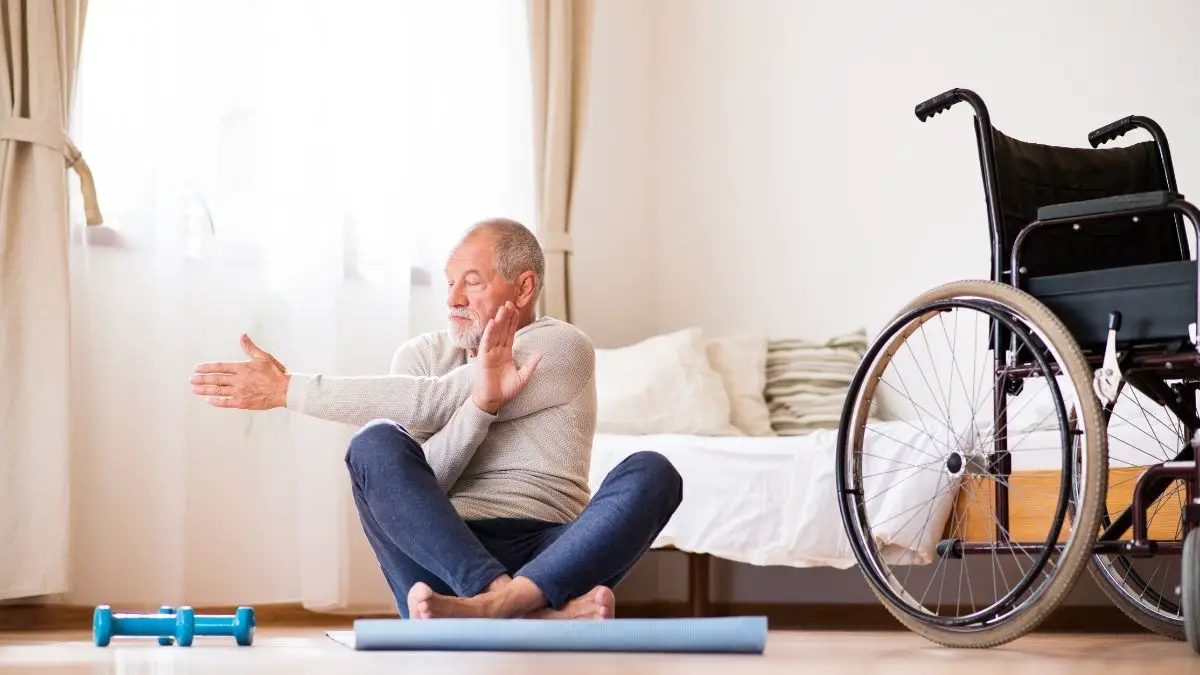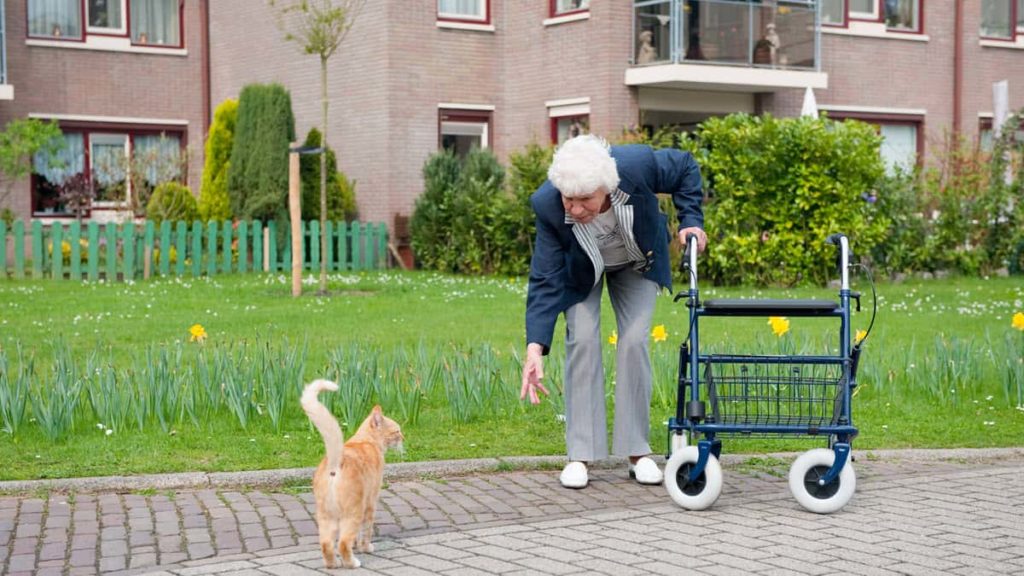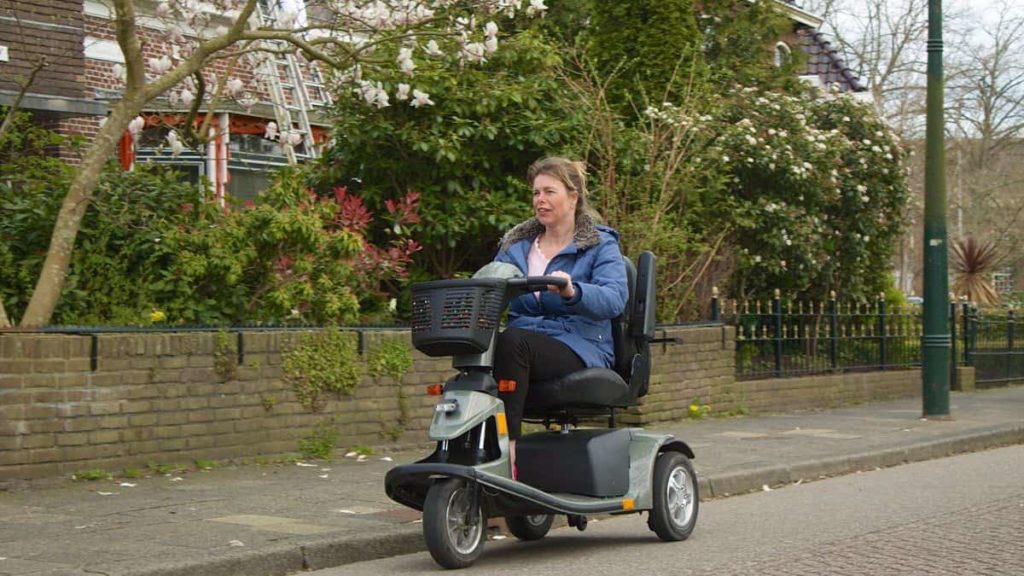Exercises for Seniors with Limited Mobility (Incl. Seated and Standing)
It is inevitable that as you get older, it becomes harder to move around and stay active. The natural effects of aging take place and we no longer have full mobility. There is no rulebook, however, stating that you need full mobility to be able to exercise and keep fit.
There are still countless ways you can incorporate fitness into your everyday routine and keep yourself in peak physical and mental condition. These range from exercises to improve your range of motion to moves that can build and strengthen muscles.
We have put together a list of the best standing and chair exercises for seniors with limited mobility, as well as information on how to get the most out of your physical activity. If you’re interested in getting into shape and keeping your body healthy, keep reading!
Exercising with Limited Mobility
Having a regular exercise routine as a senior is really important in order to maintain a good range of motion and decrease the chances of health problems developing. Even if you currently use a mobility aid, there are plenty of exercise options available.
Even though exercise may look a little different with limited mobility, there are still so many activities you can do, either from the comfort of a chair or with minimal movement. No matter what issues you may be facing as you get older, whether this is leg and back pain, chronic conditions, or disability, there are ways to reap the benefits of exercise.
Outlined below are the kinds of exercise that are suitable for a person with limited movement to undertake, each of which will help to improve the condition of your body and mind in different ways.
The Kinds Of Limited Mobility Exercises You Can Do
Strength Training
Incorporating strength training into your fitness routine will typically involve using resistance to build muscle and improve balance.
This kind of exercise can be performed even with movement issues, as you can simply focus on the lesser-affected areas of your body. Strength training is a great way to reduce the chances of falls or slips, as you will be more able to steady yourself.
Flexibility Exercises
Working on your flexibility through yoga moves and stretching is one of the best ways you can stay active, even with limited mobility.

Flexibility exercises help to reduce joint pain and stiffness, improve your range of motion, prevent future injuries, and ease pressure on the muscles. It may take some time to be able to practice a flexibility exercise if you struggle with moving, but with practice, it will become easier and can help to slow down further muscle atrophy.
Cardiovascular Exercises
if you want to work up a sweat and get your heart pumping, try some cardiovascular exercises. These range from walking, running, swimming, cycling, and anything else that will increase your heart rate.
Cardiovascular exercise may seem less accessible for seniors, but this couldn’t be further from the truth. When starting out, try just exercising the upper or lower half of the body, or take part in water aerobics so that your body feels more supported.
When walking, think about investing in a rollator to help you with moving and to make sure you feel properly supported whilst exercising. This will do wonders not only for your physical health but your self-esteem and confidence. Check out our guide for the best rollators for seniors to find out more about how they can be used alongside exercise and which are the best to purchase.
Exercises for Seniors with Mobility Issues
Arm Exercises
There are lots of arm and hand activities that can be performed with ease, even whilst sitting in a wheelchair or other chair.

Begin by stretching out your fingers, arms, and hands regularly, as this will increase and improve your circulation. Then try holding your arms out in front of you, tensing, holding this for 10 seconds, and then releasing. This exercise can also be practiced by holding your arms above your head, outstretched, and holding.
The addition of a small weight whilst exercising your arms is great for building muscle strength but is not necessary.
As well as arm exercises, we recommend training your shoulders as well. Failing to look after our shoulders properly can lead to poor strength in other parts of our body, which will overall decrease the range of movement.
Core Exercises
Exercising your core is a way of improving balance and posture, which can help you to heal from past injuries as well as prevent future ones. With a strong core, you will not only feel fitter but more supported by your body.
Most senior chair exercises work out the core, such as seated extended leg raises and seated knee-to-chest. Both of these can be done using either a chair or wheelchair, and are suitable for beginners.
These exercises are great for improving how you move because they protect the muscles in the body while strengthening your core support system.
Leg Exercises
Good circulation in your legs and feet is really important and can be achieved easily with some simple chair exercises.
One of the best chair exercises for seniors wanting to improve moving and circulation is the sit-to-stand, otherwise known as the chair squat. Keeping your core tight, stand up from your chair with your hands out in front of you for balance. Use your hips to thrust up from your seat, and then sit down again.
Not every leg exercise will work for every adult. It all depends on your level of mobility, whether you require a chair or not, how strong your lower-body muscles are, and a whole host of other factors. See what feels right for you, and do not try to push yourself too hard if something is uncomfortable or painful.
The Benefits of Having a Regular Exercise Routine

There are endless health benefits to keeping up a regular exercise routine. It is even better if you can combine exercise with a hobby that you love, and reap the health benefits while enjoying yourself!
Firstly, and perhaps most importantly, performing chair exercises even once or twice a week will improve and maintain your mental health. Living with limited mobility is difficult and prolonged periods of inactivity are bound to make you feel frustrated and agitated.
So, being able to move your body around with ease will lead to increased moods, higher energy, and improved general well-being.
In terms of your physical health, regular exercise is great for improving circulation, which is vital for your body to function properly. Exercising gets your heart pumping blood around the body, which means your vital organs will receive the oxygen and nutrients that they need.
If your health goals are to build muscle mass or lose weight, this is entirely possible even if you struggle with mobility. A number of chair exercises or exercises with limited movement are able to contribute to weight loss and improve endurance and core strength.
Exercising on a regular basis can reduce the chances of health conditions such as strokes, heart disease, high blood pressure, heart attacks, and even chronic conditions such as dementia.
How to Get the Most Out of Your Routine
Our top fitness tip for getting the most out of your exercise routine is to go into it with the right mindset.
Adapting to chair exercises or exercises which involve minimal movement will be difficult at first, and if your body has become accustomed to inactivity, it will take some time to adjust.
There is a misconception that to get fit you have to be doing high-intensity workouts every day, but this couldn’t be further from the truth: chair exercises are a great way to stay physically healthy without putting stress on the body.
We advise that you start out slow and gradually increase the level of activity, and number of activities, that you are doing in your routine. This will keep your goals manageable and help you to build up strength.

Also important is making sure that you are using the right equipment; this means having a comfortable chair, walker, or rollator, and having enough space to exercise in. Without this, you run the risk of doing more harm than good during your strength or cardio workout. There is even some exercise equipment designed for seniors with bad knees.
There will be ups and downs, and there will be days when the last thing you feel like is exercising. Stick with it, though, because in the end, you will thank yourself for it!
To make sure you stay motivated, think about all the reasons why you are exercising, and envision your future goals. Do whatever it takes to make these sink in, whether this is writing them down, creating a mood board, or telling family and friends.
Jill believes that life just keeps getting better as she gets older. She believes everyone can live a full life of endless possibilities, with the right mindset, a healthy diet and with exercise.






